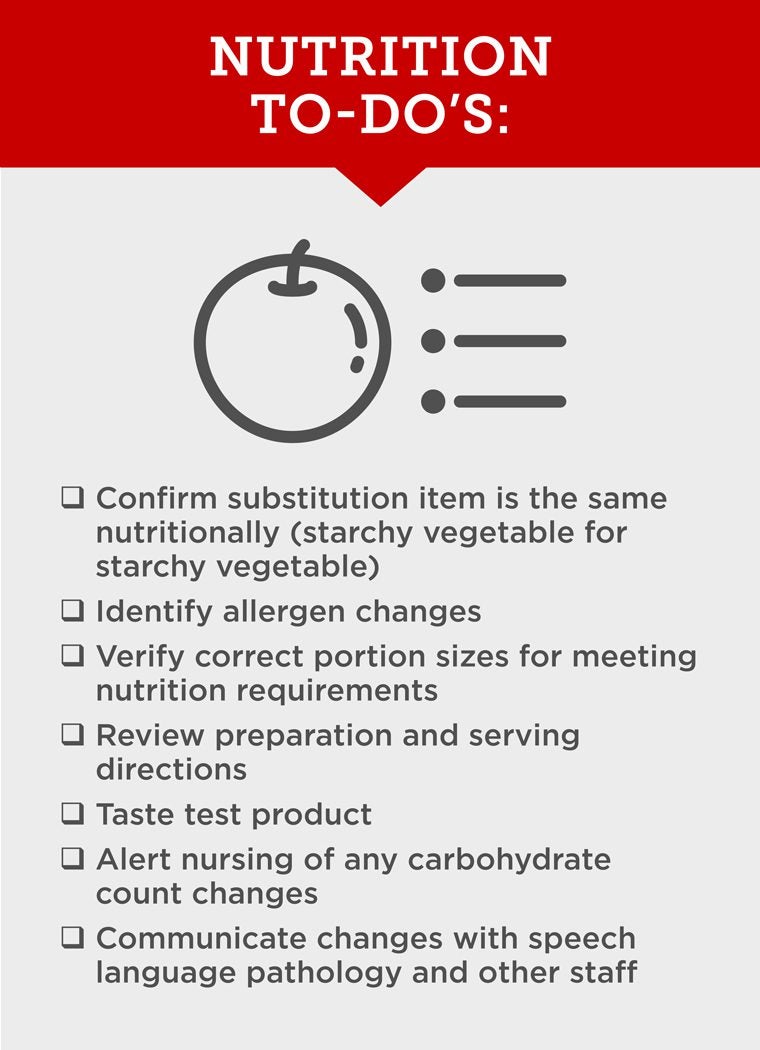Foodservice supply chain disruptions are unprecedented. For non-commercial kitchens, optimizing your offerings with menu substitutions is critical to weathering—and thriving—throughout the chaos.
No matter your setting—healthcare, senior living, education and beyond—review your menu to determine the need for short- or long-term product substitutions. Your Gordon Food Service Sales Representative can consult with you, providing adjustments and supply-chain insights for employees and the people you feed. Consider the following when reviewing menus:
- Is the menu flexible?
- Can seasonal LTOs help?
- Could cross-utilization be increased?
- Should pricing be increased?
- Can the menu be streamlined and simplified?
- Should portion sizes be adjusted?
- Is it time for increased plant-forward menuing?
Break out menu flexibility
As pricing and supply fluctuates on particular products, menu flexibility helps. Move items on or off the menu, swapping ingredients or entire offerings as the situation dictates. Some menu items could be revitalized with seasonal and/or more-abundant ingredients. Examples include Pinzimonio Salad or Szechuan Green Jackfruit Banh Mi.
 Seasonal menu items could become a limited-time offer. The get-it-now urgency can carry a better price margin on foods more-reliably in stock during a particular season.
Seasonal menu items could become a limited-time offer. The get-it-now urgency can carry a better price margin on foods more-reliably in stock during a particular season.
Also consider products in your inventory and ways you can cross-utilize. The greens used for salads can be used as sandwich toppings, or as a bed for an upscale seafood dish.
Consider your costs
Raising prices isn’t easy, but prices have increased on everything. Does your menu reflect this increase? If not, it may be necessary to meet rising operational costs. Cycle Menu Management can help you understand plate costs.
Operators with retail settings, such as hospitals or college and university dining, may find it best to use signage and/or social media to communicate price changes.
Another cost-control measure is streamlining the menu. Removing less-popular items is a start. Look at ordering patterns or audit food that goes uneaten. You could reduce production, ordering costs and food waste.
Consider portion sizes as well. While ensuring nutrition standards for serving are met, portion sizes may be able to be adjusted or optimized.
Even when there’s menu stress, there’s still an opportunity for staying on trend by menuing plant-based dishes. They are growing more popular, but does your menu reflect this shift? Menuing more beans, legumes and plants is earth-friendly and cost effective for many operations.
Keep nutrition in mind
Every product change can affect food nutrition. Ensure each substitution item has the same nutrition value (i.e., starchy vegetable substituted for starchy vegetable or poultry substituted for poultry).
Review new products for potential allergen changes. It is not necessarily bad for a product to have additional allergens. A consistent, in-house review process is vital for awareness. Check product descriptions and portion sizing to ensure the substitute product meets nutrition requirements.
Part of the review should include preparation instructions to note production time, equipment needed or serving instructions.
Finally, taste the new product! Then communicate menu and product changes with your team.
Leaving your comfort zone for purchasing and menu changes is hard, especially in a challenging environment is no easy task. Gordon Food Service is here to support and help you thrive through supply chain chaos.
Looking for additional menu guidance? Click here.












